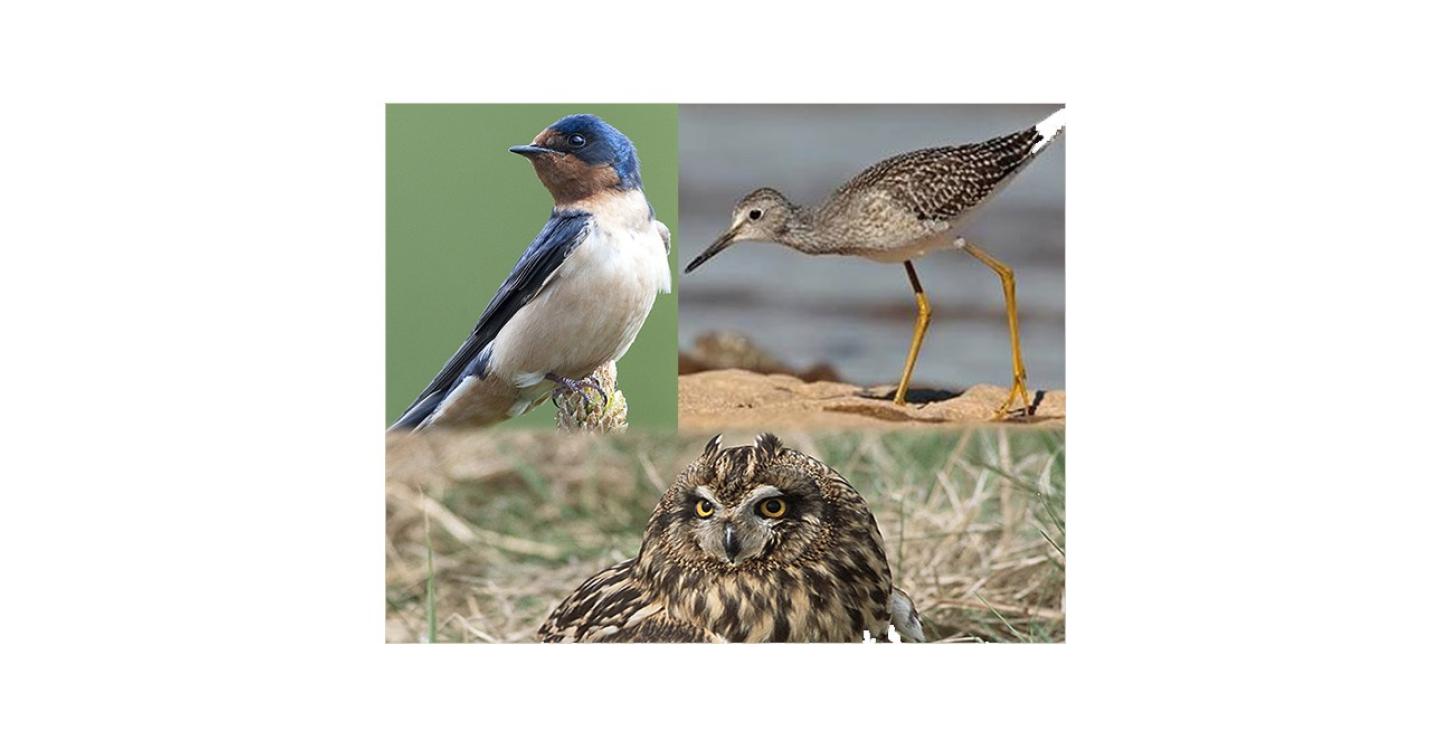
The WRRB recently approved three status re-listings of migratory birds. Photos by Gordon Court and Government of Canada.
WRRB approves three status re-listings of migratory birds
October 28, 2022
The Wek'èezhìı Renewable Resources Board voted to support the status listings of three bird species following a presentation by representatives from Environment Canada and Climate Change Canada on Sept. 13.
Bruce Laurich, Species-At-Risk biologist with the federal department explained during the WRRB quarterly board meeting on Sept. 13 that it is proposed the short-eared owl be listed as threatened from special concern, the barn swallow as special concern from threatened, and the lesser yellow-legs as threatened under the Species At Risk Act.
Laurich said that the short-eared owl has shown to have dropped in population across Canada by about 70 per cent since 1970, according to Breeding Bird Survey data.
The main causes of the decline have been habitat changes, severe weather events, and climate changes, he said, adding that ‘shrubification’, which are conditions that provide for the increased growth of shrubs across Northern tundra, have led to the reduction in prey availability and the increase in predation.
“The population has been declining dramatically,” Laurich said, pointing out that there are about only about 31,000 adult individuals in Canada.
The bird is distributed across most of the country but mostly breeds in the sub-Arctic and Prairie regions. It frequents open areas like grasslands, tundra, and wetlands and moves long distances between breeding seasons.
The lesser yellow-legs has also seen a significant 69 per cent decline in population across Canada over the last 60 years, where there are now 527,000 adult individuals, Laurich said.
Hunting during migration and overwintering, habitat loss, and development have been the main contributions to their decline.
The barn swallow, according to the department’s maps, has limited presence in Wek'èezhìı; however, Laurich said that there has been evidence of them in the region.
“My understanding is that the barn swallow is further North in the NWT and further North in Nunavut but that it does cover the Wek'èezhìı range based on our information,” Laurich said noting that there have been sightings to the department of barn swallows around Inuvik, Great Bear Lake, and over to the Nunavut border.
“So it looks to be pretty widespread. I’m not sure how dense the population is though.”
Updates on Bird Migratory Regulations
Myra Robertson, Manager of Wildlife and Habitat Assessment at Environment and Climate Change Canada also presented to the board regarding this year’s updates to the federal Migratory Bird Regulations. The updates, a nearly decade-long process, were completed in July and will see more language clarity in wording, better recognition of Section 35 Constitutional Rights among Indigenous people, and new management rules for migratory birds with hunting and nest protection - across the country.
Some highlights during Robertson’s presentation included the Constitution Act’s Section 35 right for Indigenous people to hunt migratory birds and harvest eggs without a permit and without being subject to open season or daily bag or possession limits.
Additionally, the regulations more fully address Indigenous and treaty right holders’ right to use, gift, sale or exchange migratory birds and/or feathers.
Robertson said regulations prohibit the use of drones to hunt migratory birds but there are exceptions for Indigenous people under land claim agreements, including the Tłı̨chǫ Agreement.
General Hunting License requirements remain unchanged in the regulations while new rules have been added to prohibit wastage and the abandonment of harvest.
Harvested birds are also now allowed to be donated for charity purposes with the creation of a new Charity Permit, under the regulations. With the document, people are now allowed to accept harvested birds for such reasons as a charity dinner or at a food bank.
Nesting protection
Robertson said the regulations also have some changes related to nest protection where only nests of migratory birds with “high conservation value” will be under protection– such as when containing a live bird or an egg. In previous iterations of the regulations, nests were protected under the regulations even in the case when those nests had been abandoned by the bird.
The regulations do have a list of 18 species – including the pileated woodpecker, which lives in the Northwest Territories that will receive year-round protection of nests unless they have been shown to be abandoned, Robertson said.